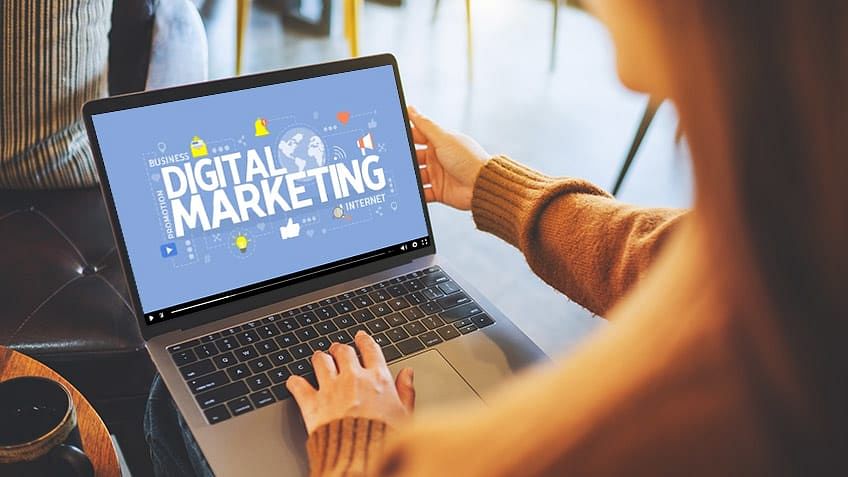Redefine Aesthetic Appeals with Web Design Carlsbad: Where Appeal Fulfills Feature
Enhance Individual Experience and Drive Web Traffic With Responsive Website Design
In today's electronic landscape, where customers are accessing web sites from a wide range of tools, receptive web layout has become more vital than ever before. With its capacity to adapt and flawlessly get used to various display dimensions, receptive layout not only boosts user experience yet also drives traffic to your internet site. Why is this layout strategy so important? How does it improve customer engagement and increase website traffic? In this discussion, we will explore the crucial elements of efficient responsive style, look into the very best practices for its execution, and uncover the tricks to enhancing individual experience while driving even more website traffic to your internet site.
Why Responsive Internet Style Issues
Receptive website design is a necessary aspect of contemporary web advancement due to its ability to make sure optimum user experience throughout numerous gadgets and display sizes. With the spreading of mobile phones, tablets, and various other mobile gadgets, it has actually become crucial for web sites to adapt and give seamless functionality no matter the device being used.
The key reason responsive web style issues is that it permits customers to have a delightful and regular searching experience, despite the gadget they are utilizing. A receptive web site instantly changes its format, content, and style aspects to fit the screen dimension and resolution of the tool, making certain that individuals can easily communicate and navigate with the site without any kind of trouble or aggravation.
Moreover, responsive web style likewise plays a substantial function in seo (SEARCH ENGINE OPTIMIZATION) Internet search engine, such as Google, focus on sites that are mobile-friendly and responsive in their search engine result. By integrating responsive layout principles, web sites can improve their exposure and ranking, bring about enhanced natural website traffic and potential clients.

Boosting User Interaction Via Responsive Layout
Optimizing user engagement is an essential goal of responsive style, as it makes sure that users can conveniently gain access to and interact with website web content on any gadget. With the raising usage of tablet computers and smart devices, it is important for web sites to adapt to various screen dimensions and resolutions. Receptive style enables internet sites to instantly change their layout and content to supply a seamless individual experience across gadgets.
One of the major methods receptive layout improves individual interaction is by lowering lots times. With a receptive internet site, individuals don't have to wait for different mobile variations to lots, leading to quicker accessibility to web content. This improved speed leads to higher user contentment and urges them to spend more time on the website.
In addition, responsive style enhances customer interaction by improving navigating and customer interface (The Ad Firm digital marketing). When a website is designed responsively, menus and switches are enhanced for touch communications, making it simpler for individuals to communicate and browse with the site on their mobile devices. This user-friendly and instinctive experience keeps customers engaged and motivates them to discover even more of the website
Furthermore, responsive style allows for much better material visibility and readability. By adapting the design and font dimensions to various gadgets, responsive websites guarantee that users can quickly recognize the content and check out. This improves user involvement by minimizing the requirement for zooming or scrolling to read the text.
Raising Internet Site Traffic With Responsive Website Design
With the growing popularity of mobile gadgets, having a web site that is receptive to different screen dimensions and resolutions is vital for driving increased traffic. In today's electronic landscape, individuals are accessing sites from a range of gadgets such as mobile phones, tablets, and desktop. Each of these tools has various display sizes and resolutions, and if your website is not created to adjust to these variants, it can result in a bad customer experience and a loss of prospective website traffic.
Responsive website design makes sure that your web site looks and works optimally across all gadgets. By utilizing adaptable grids, liquid pictures, and media inquiries, responsive layout enables your site to instantly adjust its navigating, content, and design to fit any kind of screen dimension. This indicates that customers will have a seamless surfing experience no matter of whether they are making use of a little smartphone or a huge desktop computer computer.
Trick Aspects of Effective Responsive Style
Reliable responsive layout incorporates try this web-site several key aspects that make sure a seamless user experience across various devices. This enables content to be presented in a understandable and aesthetically enticing manner on any device.
Another vital element is media queries. These permit designers to use different designs and formats based upon the features of the customer's gadget, such as screen size and alignment. By utilizing media questions, designers can optimize the discussion of web content for each device, making sure that it is understandable and quickly obtainable.
Responsive pictures are likewise critical in efficient responsive layout. Images that are as well large can decrease web page tons times on mobile phones, while pictures that are also tiny might show up pixelated on bigger displays. By using techniques such as responsive image resizing a fantastic read and careless loading, developers can make certain that pictures are properly sized and optimized for each and every tool.
Lastly, effective responsive style involves a mobile-first strategy. This suggests making and prioritizing content for mobile devices first, and after that expanding and boosting the style for larger displays. This technique guarantees that one of the most essential material is conveniently available on smaller screens, while still offering a rich experience on larger gadgets.
Best Practices for Executing Responsive Internet Style
Implementing receptive internet layout requires mindful factor to consider of different best practices to make certain an optimum individual experience across various gadgets. When applying receptive web layout., right here are some key ideal techniques to follow.
To start with, it is vital to focus on mobile customers. With the increasing supremacy of mobile tools, designing for mobile-first has come to be crucial. Start deliberately for smaller sized screens and after that gradually improve the design for bigger screens.

Another important ideal method is to maximize pictures for various display resolutions. Big images can reduce down the filling time of your site, specifically on smart phones with slower links. Use responsive pictures that can be resized based upon the gadget's display resolution to boost efficiency.
Furthermore, test your web site on various devices and display dimensions to make certain a smooth and regular experience. There are numerous testing devices offered that can assist you recognize any kind of issues and make essential modifications.
Lastly, prioritize click for more use and accessibility. Make sure that your website is very easy to navigate, with clear and succinct material. See to it that your web site is available to people with specials needs and complies with access standards.
Verdict
In conclusion, receptive web layout plays an important function in improving individual experience and driving traffic to sites. By embracing receptive design concepts, websites can make sure ideal viewing experiences across different tools, leading to boosted user interaction.
Enhancing customer involvement is a vital objective of receptive layout, as it makes certain that individuals can conveniently access and communicate with site content on any type of gadget. Receptive layout allows internet sites to instantly adjust their format and material to supply a smooth customer experience throughout gadgets.
Additionally, responsive style enhances individual interaction by boosting navigation and user interface.Responsive images are also vital in effective responsive layout. By embracing receptive design concepts, sites can make sure optimal viewing experiences throughout different devices, leading to increased customer interaction.